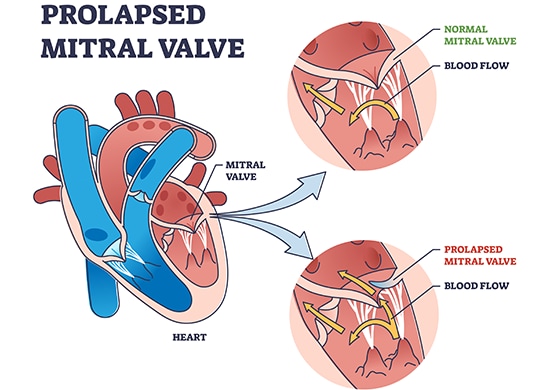Transcatheter Edge-To-Edge Repair (TEER)
If you have mitral valve regurgitation, you may be eligible for a minimally invasive procedure called Transcatheter edge-to-edge repair (TEER) at Montage Health to treat it. A specialized heart doctor can perform this outpatient procedure to improve your symptoms and quality of life.
What is mitral regurgitation?
Your mitral valve connects your left upper and lower heart chambers. Sometimes, the valve flaps (leaflets) don’t close all the way, causing your blood to leak and flow backward. This leak, called mitral regurgitation (leaky mitral valve), makes your heart work harder. It’s a heart valve condition that can cause mild to serious symptoms.
If you don’t get treatment for severe mitral valve regurgitation, it can worsen over time, causing heart failure.
Treatments for a leaky mitral valve
Rely on your Montage Health care team to recommend the best mitral valve regurgitation treatment option for you, including:
- Medication
- Minimally invasive procedure to repair the mitral valve
- Mitral valve repair or replacement open-heart surgery
Your doctor will use minimally invasive treatments to repair your mitral valve whenever possible. Less invasive procedures may provide a shorter recovery as well as less pain and risk of complications. Your doctor can help you make the best choice to improve your valve’s function.
Minimally invasive mitral valve repair
Transcatheter edge-to-edge repair (TEER) is an inpatient procedure to repair a leaky mitral valve. The procedure clips the leaflets together to help them close better. This reduces blood backflow while relieving your symptoms and stress on your heart.
When you have TEER at Montage Health, your procedure will take place at Community Hospital of the Monterey Peninsula's state-of-the-art Hybrid Cardiac Catheterization Laboratory.
What to expect
Your structural heart team will guide you through the diagnostic work-up and give you instructions about how to prepare for your procedure. At the hospital, you’ll receive general anesthesia to put you to sleep before your procedure. The TEER procedure can take between 90 minutes and 3 hours.
During TEER, your doctor makes a small incision in your groin. Your doctor then inserts a long, thin tube called a catheter through your blood vessel and up to your heart. The catheter delivers a MitraClip™ or another small device to clip your mitral valve flaps closer together. Once it’s in place, your doctor removes the catheter.
You can expect to return home after a one- or two-day stay in the hospital. When you’re ready to go home, you get instructions about how to take care of yourself and recover. Complete recovery usually takes about a week.

Follow-up care after TEER
Follow-up care after TEER will include a visit one week after your procedure, then a 30-day and one-year visit with testing.